Introduction
In the rapidly evolving world of B2C e-commerce, innovative solutions are reshaping the consumer shopping experience and optimizing business operations. This article delves into the essential features of cutting-edge e-commerce platforms, highlighting the importance of user-friendly interfaces, mobile responsiveness, and secure payment gateways. With over half of all web traffic originating from mobile devices, ensuring a seamless mobile experience is crucial for capturing today's tech-savvy shoppers.
The discussion extends to diverse B2C e-commerce models, from direct-to-consumer approaches and online marketplaces to subscription services and social commerce. Each model offers unique advantages, catering to different market demands and consumer behaviors. The article also explores the significant benefits of B2C e-commerce for business growth, such as global market access, reduced overhead costs, and enhanced data-driven decision-making.
Choosing the right e-commerce platform is pivotal for long-term success, requiring careful consideration of scalability, integration capabilities, and customer support. Strategic implementation, guided by clear objectives and leveraging advanced technologies like AI, is essential for optimizing operations and enhancing customer experiences. Real-world case studies of successful e-commerce businesses provide valuable insights into effective strategies and best practices.
Finally, the article examines emerging global market trends and future projections, emphasizing the importance of sustainability, omnichannel retailing, and innovative technologies like augmented reality. By staying ahead of these trends, businesses can ensure sustained growth and competitiveness in the dynamic e-commerce landscape.
Key Features of Innovative B2C E-commerce Solutions
Innovative B2C e-commerce solutions are redefining the shopping experience and streamlining business operations with cutting-edge technology and strategic features. A user-friendly interface is crucial, allowing customers to navigate seamlessly, which is particularly important as over 50% of users won't consider purchasing from a brand with a poorly designed mobile site. Mobile responsiveness plays a pivotal role, ensuring accessibility across all devices and catering to the growing number of mobile shoppers, with nearly half of all website traffic coming from mobile devices.
Secure payment gateways are essential in establishing buyer trust, providing diverse payment options to accommodate varying preferences. Advanced analytics tools empower businesses to track customer behavior and preferences meticulously, facilitating data-driven decisions that enhance marketing strategies. This aligns with the trend of utilizing client data for personalized interactions, a critical element in modern consumer experience.
Moreover, robust support systems, including chatbots and FAQs, provide immediate assistance, significantly enhancing overall satisfaction. For instance, Burberry's integration of a chatbot on its website offers real-time assistance with product inquiries and styling advice, exemplifying the effective use of conversational commerce. This approach not only meets but exceeds client expectations, as evidenced by PwC's finding that clients are willing to pay up to 16% more for exceptional service.
The integration of AI and conversational interfaces further enhances the shopping experience by providing personalized assistance throughout the buying journey. This technological advancement is part of a broader trend where digital and physical retail experiences are merging to keep customers engaged, as noted by Chain Store Age.
Integrating these innovative features not only meets the heightened expectations of today's consumers but also positions businesses to take advantage of the changing dynamics of the online market.
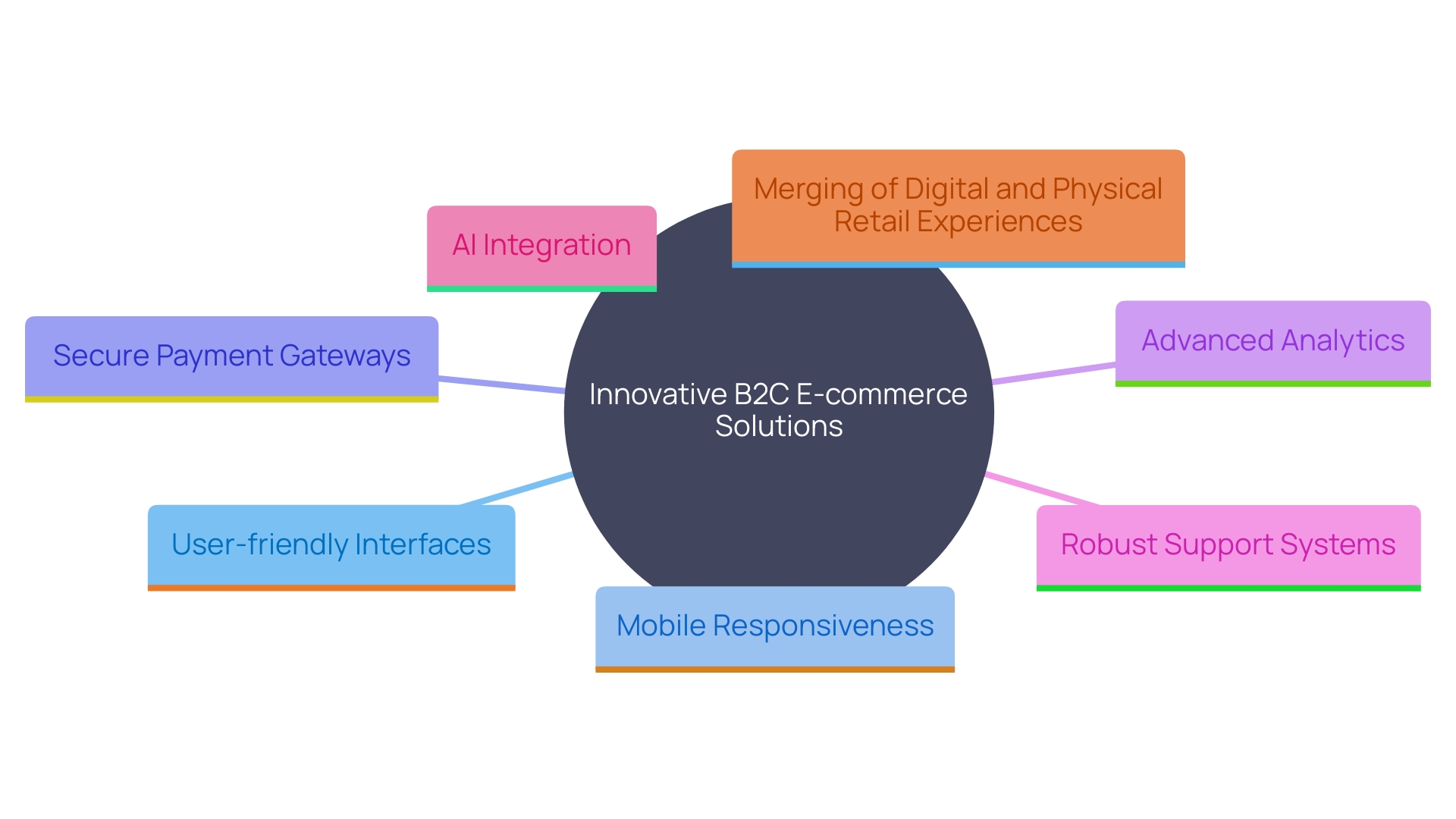
Types of B2C E-commerce Models
The landscape of B2C e-commerce is rich with various models, each tailored to meet distinct market demands. The direct-to-consumer (DTC) model, for instance, enables brands to sell directly to buyers, bypassing intermediaries and boosting profit margins. This approach has seen substantial growth since the early 2000s, particularly with the advancement of online channels and the rise of omnichannel strategies. Research indicates that the COVID-19 pandemic further accelerated this trend, pushing more brands towards DTC models to maintain control over their customer relationships and data.
Marketplaces like Amazon and eBay offer another significant model, providing a platform for numerous sellers. These marketplaces expand product variety and reach, making them a cornerstone of the e-commerce ecosystem. The expansion of such platforms is propelled by their capability to gather various products and vendors, which attracts a wide audience seeking convenience and diversity.
Subscription services have carved out a niche by providing individuals with regular deliveries of products, thereby fostering brand loyalty. This model is particularly successful in industries with high buyer frequency and recurring demand, such as food and beverages. The subscription economy is expected to maintain its upward trend, fueled by the ease it provides individuals and the consistent revenue flow it offers enterprises.
Social commerce represents a burgeoning model that leverages social media platforms to facilitate direct sales. This model taps into the social engagement of individuals, transforming social interactions into purchasing opportunities. The integration of shopping features on platforms like Instagram and Facebook has made it easier for brands to reach and convert their audience, capitalizing on the organic traffic and engagement these platforms generate.
In summary, the B2C online retail sector is dynamic and multifaceted, with each model offering unique advantages. As consumer behavior continues to evolve, companies must adapt by leveraging these models to meet the changing demands of the market.
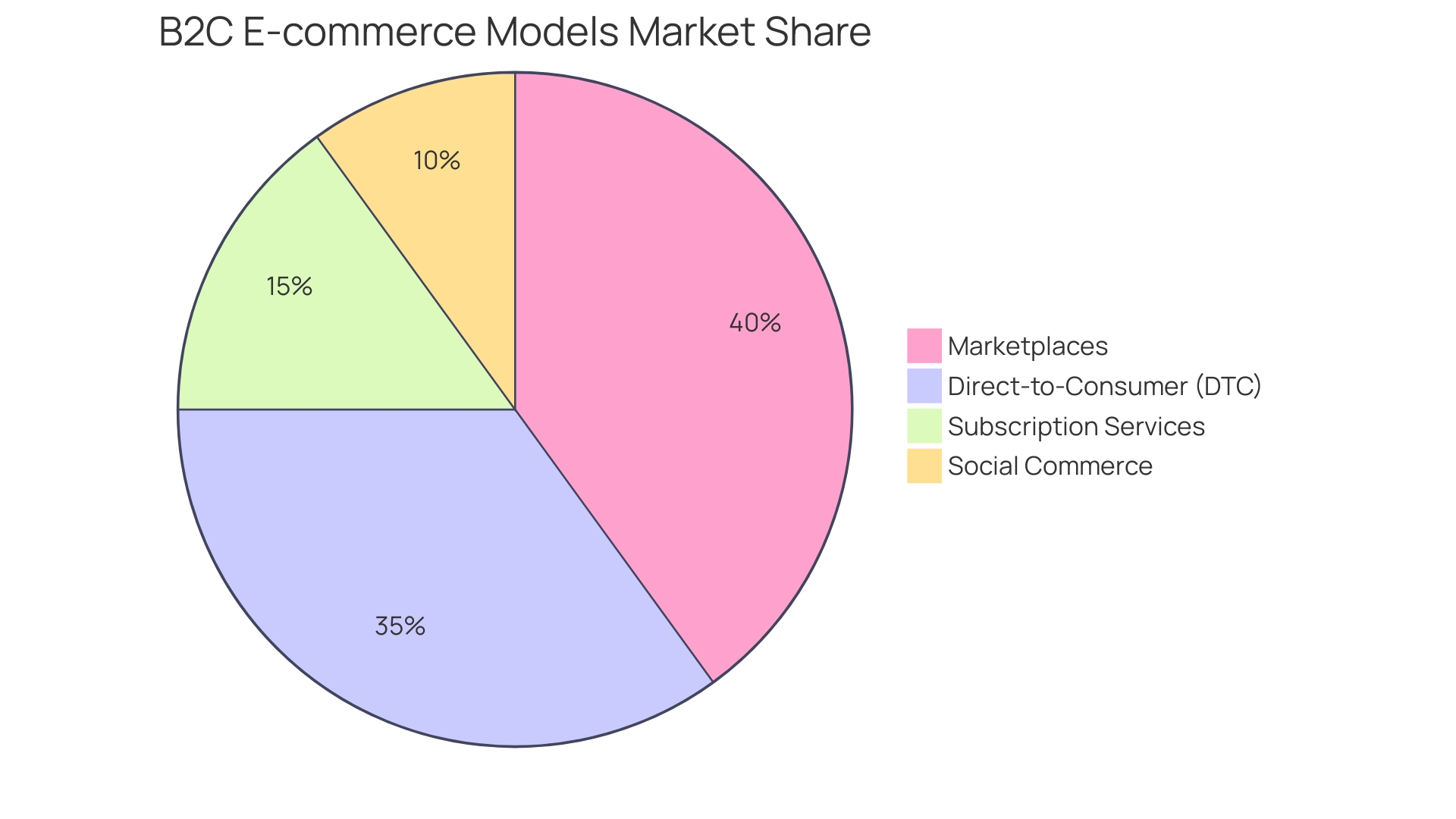
Benefits of B2C E-commerce for Business Growth
B2C online retail provides considerable benefits that drive growth in enterprises. By transcending geographical boundaries, it grants enterprises access to a global market, enabling them to connect with a vast number of potential customers. This scalability is particularly evident in regions like North America, Europe, Asia-Pacific, and Latin America, where internet accessibility is on the rise. For instance, India's internet users are projected to reach 900 million by 2025, showcasing the enormous potential for e-commerce growth.
Moreover, the shift to online platforms reduces overhead costs compared to maintaining physical stores, thus improving profitability. The online marketplace also enables customized marketing approaches, where companies can utilize purchasing behavior data to adjust offers, significantly increasing conversion rates. Innovations in payment systems, logistics, and user experience continually enhance this tailored approach.
Real-time data analytics play a crucial role in optimizing inventory management. By providing immediate insights, organizations can streamline operations and minimize waste, ensuring a more efficient supply chain. As Scott Rigby, Chief Technology Advisor at Adobe, points out, focusing on consumer experiences that address their challenges is key to long-term business success.
The constant evolution of online retail, driven by technological advancements and increasing internet penetration, continues to reshape the global marketplace, making it an indispensable component of modern commerce.
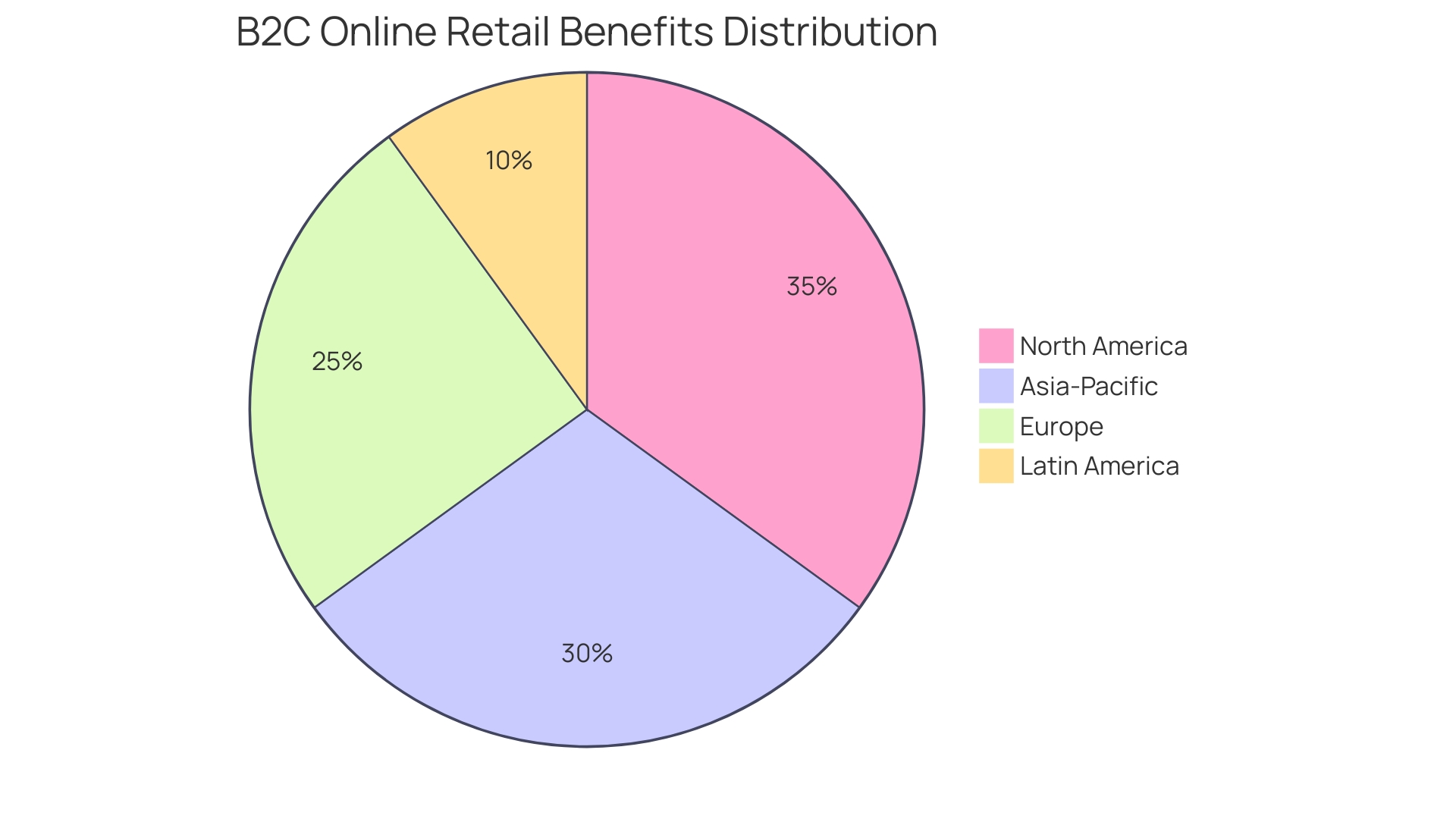
Choosing the Right B2C E-commerce Platform
Selecting the appropriate B2C online retail platform is crucial for achieving operational success and maintaining growth in a competitive market. Businesses should evaluate platforms based on scalability, ease of use, and seamless integration with existing systems. Leading platforms like Shopify, WooCommerce, and Magento each offer unique features designed for various organizational needs, making the choice complicated yet essential.
In an ever-evolving e-commerce landscape, platforms must offer robust customer support, stringent security measures, and extensive customization options. For instance, Shopify is renowned for its user-friendly interface and robust ecosystem, while Magento excels in providing extensive customization for larger enterprises. 'WooCommerce, integrated with WordPress, offers flexibility for organizations of varying scales and budgets.'.
A data-driven approach is essential in making an informed decision. Conducting thorough research, reading reviews, and comparing features will help ensure alignment with long-term organizational goals. As Scott Rigby, Chief Technology Advisor at Adobe, emphasizes, “Developing ways of giving customers experiences that answer their challenges and pain points will help secure the future of businesses for years to come.”
Moreover, platforms must facilitate not just the initial setup but also ongoing growth. The ability to adapt to new technologies and market trends, such as AI-driven commerce, can be a game-changer. As observed in the example of the new checkout-free store in Dublin, utilizing advanced technologies can significantly improve the shopping experience, providing convenience and efficiency.
Ultimately, the goal is to create an ecosystem that supports both immediate and future needs, driving not just sales but also customer loyalty and organizational agility. By choosing a well-designed e-commerce platform, businesses can turn the question from “how to get started” to “how much can we grow?”
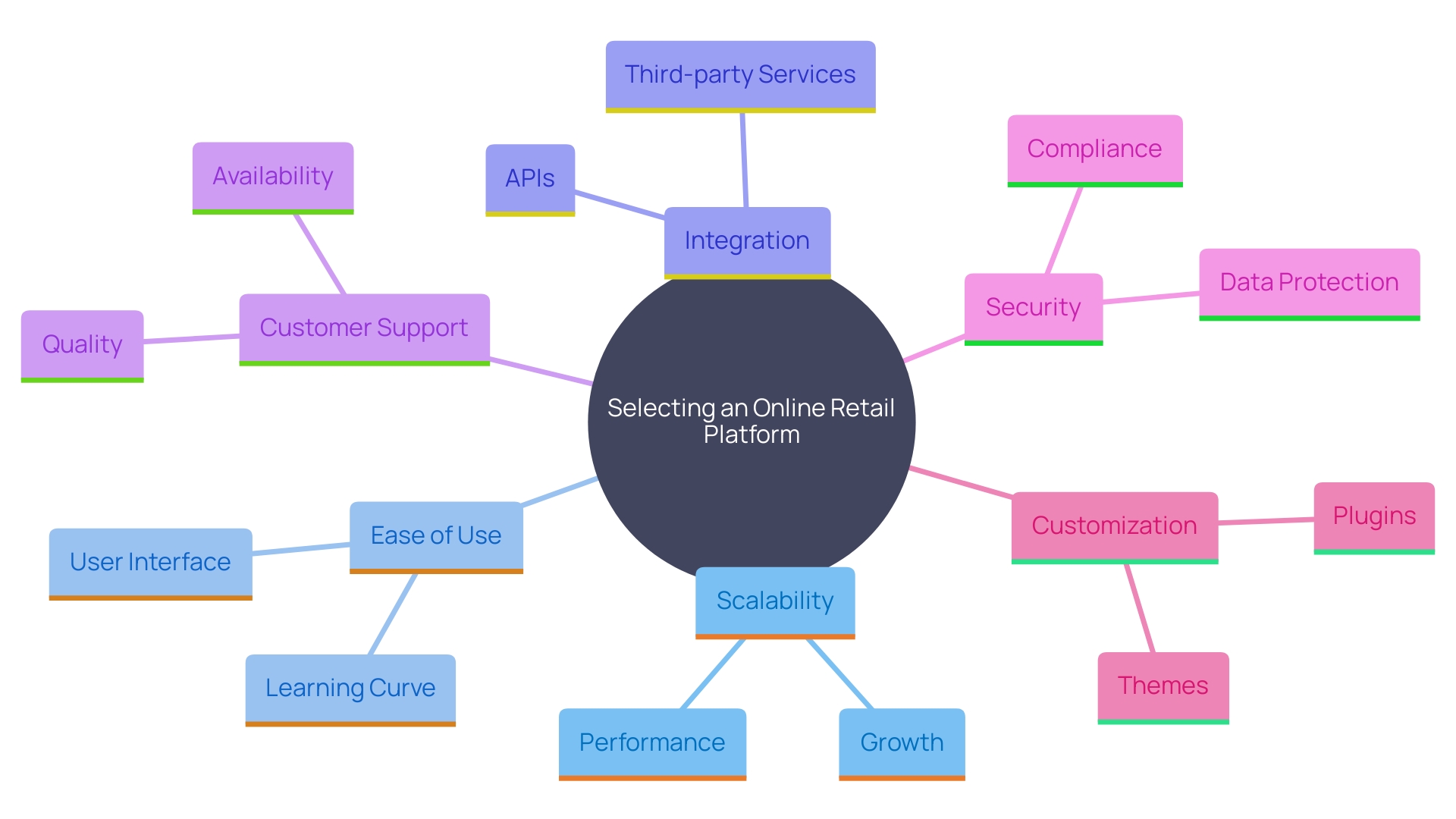
Strategies for Successful B2C E-commerce Implementation
Strategic planning is crucial for the effective implementation of B2C e-commerce. Establishing clear objectives and key performance indicators (KPIs) directs progress and guarantees alignment with organizational goals. Leveraging SEO and content marketing strategies significantly enhances online visibility, driving organic traffic and bolstering brand presence. Social media platforms serve as powerful tools for targeted advertising, fostering engagement and building robust brand awareness. A well-organized logistics strategy is crucial for effective order fulfillment and delivery, directly affecting client satisfaction and loyalty.
One of the key drivers behind these efforts is data. E-commerce retailers have access to a wealth of data from various touchpoints, from advertisements to purchase reviews. This data can be mined to provide actionable insights, assisting organizations in strategically targeting and retaining customers. Ongoing observation and enhancement informed by analytics enable organizations to adjust to evolving market trends and consumer preferences, ensuring they stay competitive.
The role of AI technology in e-commerce cannot be overstated. By implementing the right AI tools and processes, businesses can manage and utilize structured and unstructured data effectively. This method not only improves decision-making but also forecasts buyer behavior, leading to better results. For instance, automating data pipelines and using advanced analytics can streamline operations and enhance the overall user experience.
Furthermore, the evolving buyer behavior and technological advancements have highlighted the importance of an exceptional user experience (UX). Retailers who prioritize UX and leverage data-driven insights are better positioned to meet and exceed customer expectations, ultimately maximizing sales and profits. This approach is especially crucial in difficult economic periods, where adjusting to customer needs can distinguish a business from its rivals.
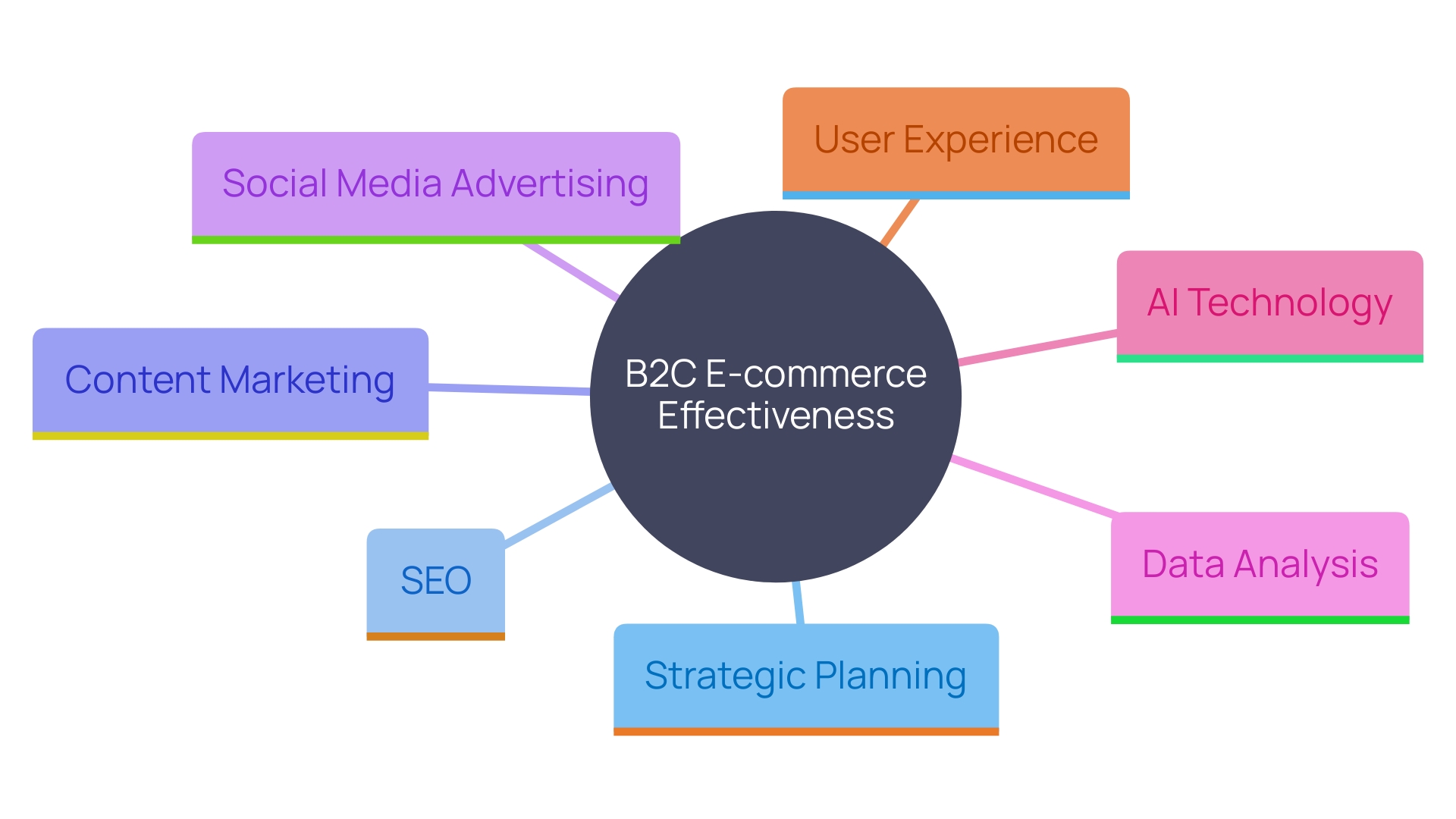
Integrating AI and Personalization in B2C E-commerce
Integrating artificial intelligence (AI) into B2C e-commerce significantly boosts personalization and operational efficiency. AI-powered tools meticulously analyze customer data to deliver tailored product recommendations, enhancing user experience and driving sales. For instance, chatbots have revolutionized user interaction by providing instant, 24/7 support, eliminating long wait times and ensuring seamless purchases. Predictive analytics advance this a step further by forecasting trends and buyer behaviors, allowing businesses to stay ahead of the curve. Personalization extends to targeted email campaigns and dynamic website content, fostering deeper connections with customers and enhancing brand loyalty. 'This strategy not only meets the ever-growing demand for customized experiences but also positions companies to capture a share of the $2 trillion personalization market.'.
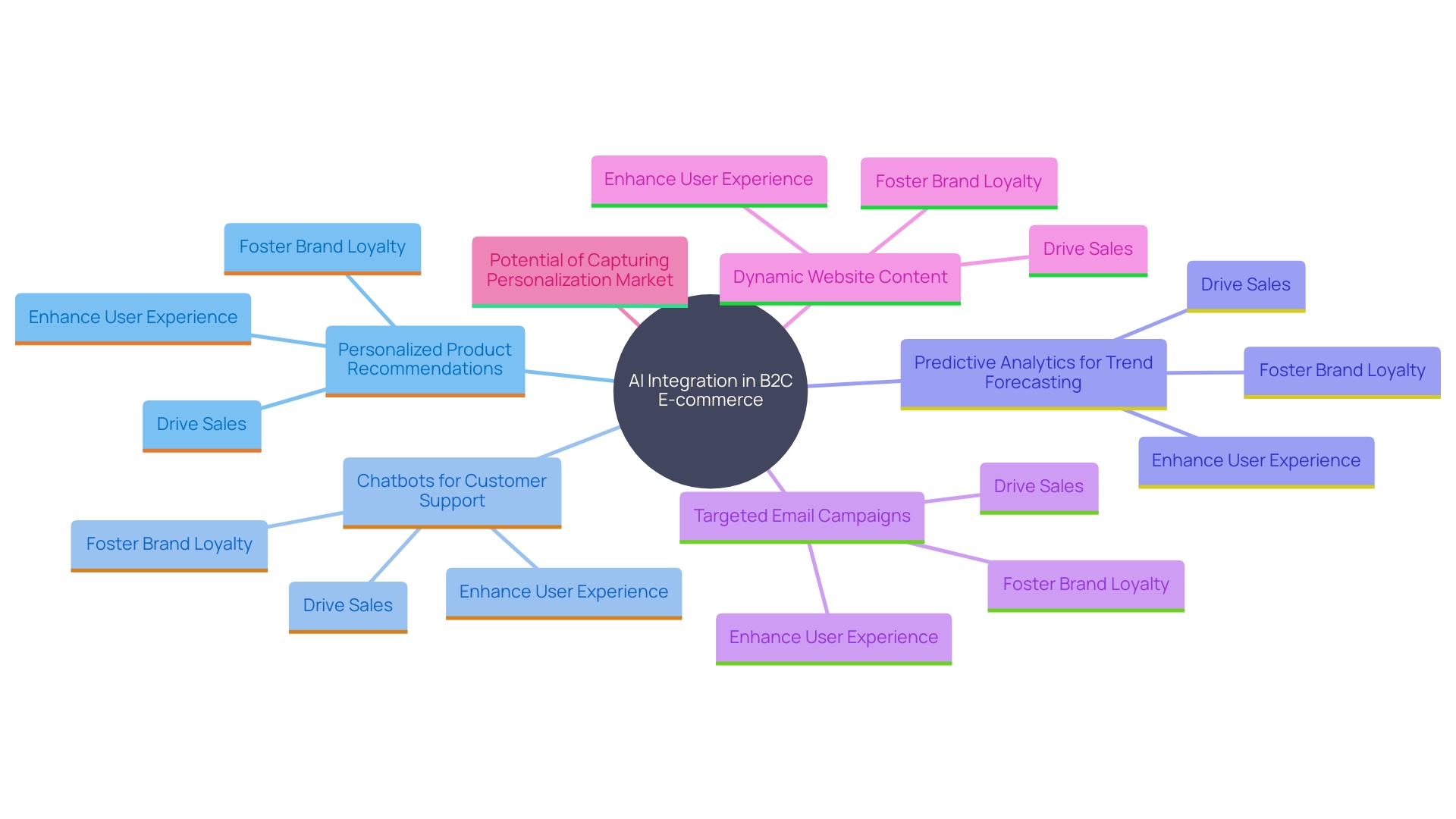
Global Market Trends and Future Projections
The global B2C online retail market is evolving rapidly, driven by several key trends and technological advancements. One significant trend is the shift towards omnichannel retailing, which emphasizes providing a seamless shopping experience across both online and offline platforms. This approach caters to the modern consumer's demand for convenience and flexibility, allowing them to shop whenever and wherever they want.
Sustainability is also becoming a critical factor in the online shopping environment. Consumers are increasingly favoring eco-friendly brands, pushing businesses to adopt more sustainable practices to attract and retain customers. This shift is evident across various e-commerce markets, including food, beverages, and household essentials, where digital channels are used to provide convenient access to eco-friendly products.
Social commerce continues to rise, with social media platforms integrating shopping features that make it easier for consumers to purchase products directly from their feeds. This trend is transforming the way businesses interact with clients, leveraging the power of social networks to drive sales and brand loyalty.
Additionally, the use of augmented reality (AR) in online retail is gaining traction. AR technology allows customers to visualize products in their environments before making a purchase, enhancing the online shopping experience and reducing the likelihood of returns. This innovative approach is particularly popular in the fashion and home decor industries, where seeing a product in context can significantly influence purchasing decisions.
Future projections indicate continued growth in the B2C online retail market, fueled by ongoing technological advancements and changing consumer behaviors. For example, the United States retail online sales reached $579 billion in the first half of 2024, with predictions to exceed $1.26 trillion by the end of the year. This growth highlights the growing significance of online commerce in the global economy and the necessity for businesses to remain ahead of emerging trends and technologies.
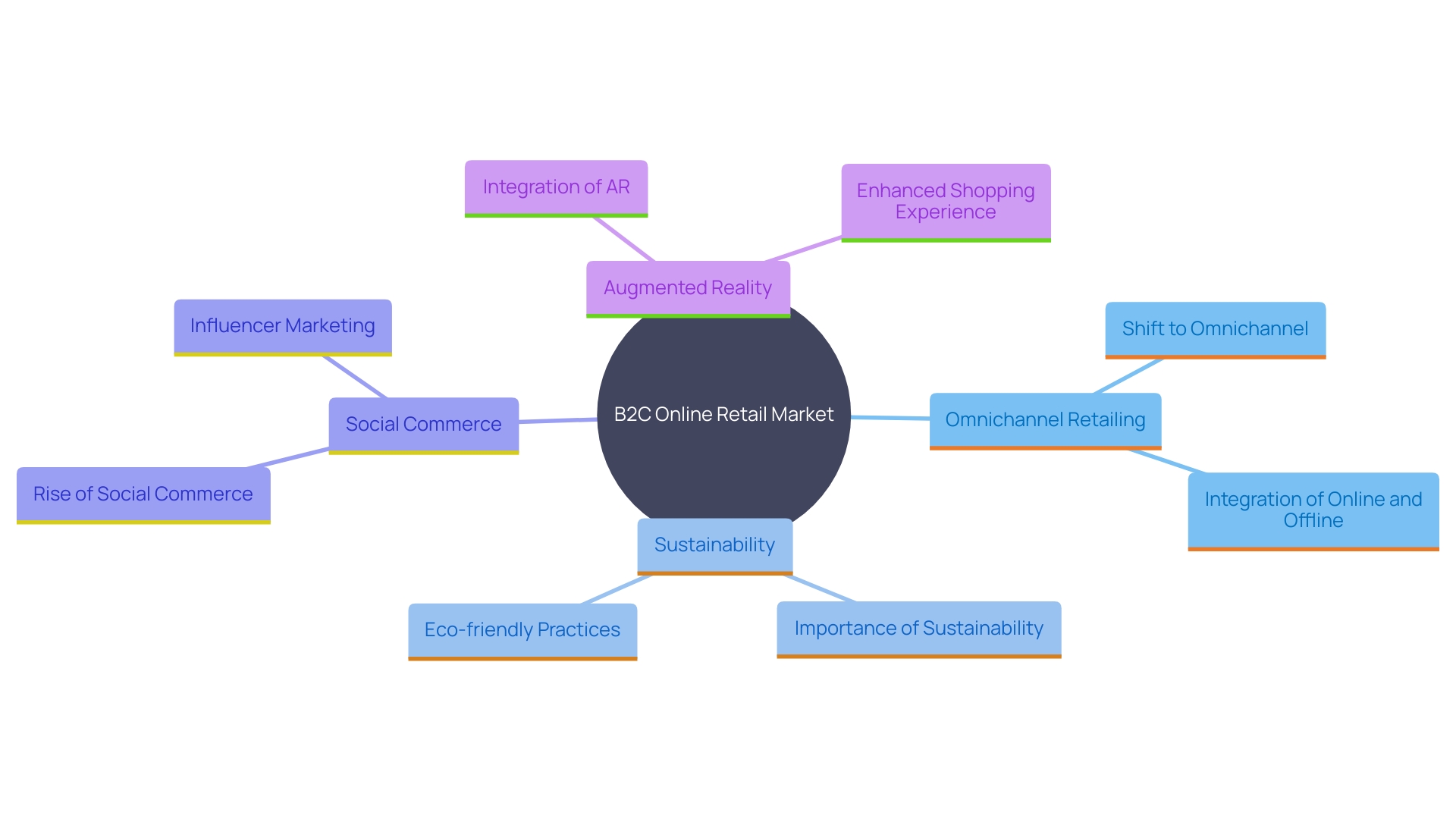
Case Studies: Successful B2C E-commerce Examples
Exploring successful B2C e-commerce examples sheds light on impactful strategies. SmartBuyGlasses, a global leader in designer eyewear, leverages an integrated supply chain and technological innovation to offer an expansive range of products at accessible prices. Their dedication to client needs and ongoing employee education through platforms like TalentLMS has strengthened their standing in over 30 nations.
Warby Parker transformed eyewear by launching virtual try-ons and a home try-on program, significantly enhancing client engagement. Similarly, Glossier built a community-driven brand through social media, emphasizing user-generated content and feedback. Amazon's vast product range and customer-centric approach highlight the critical role of convenience and choice in driving sales.
These case studies underscore the importance of innovation, customer focus, and adaptability in the rapidly evolving B2C e-commerce landscape, demonstrating that a blend of cutting-edge technology and a deep understanding of customer needs is essential for success.
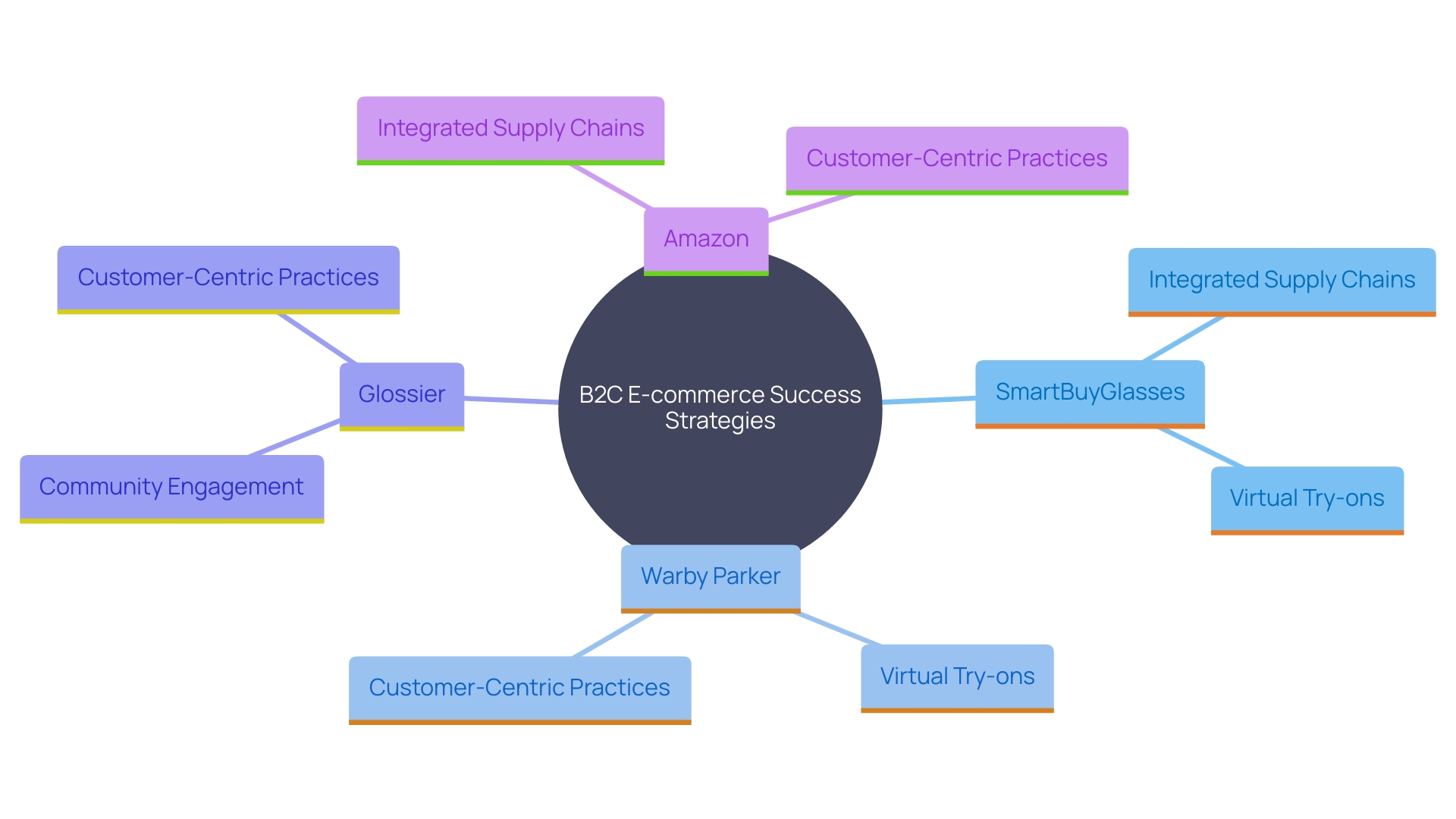
Conclusion
The B2C e-commerce landscape offers significant opportunities for businesses ready to adapt and innovate. Key elements such as user-friendly interfaces, mobile responsiveness, and secure payment gateways are essential for enhancing the shopping experience. As consumer expectations shift, integrating technologies like AI and analytics becomes crucial for personalization and operational efficiency.
Diverse e-commerce models—direct-to-consumer, marketplaces, subscription services, and social commerce—provide unique advantages that cater to varying consumer behaviors. By leveraging these models, businesses can effectively respond to market demands and tap into global growth.
Selecting the right e-commerce platform is vital for long-term success. Careful evaluation based on scalability, integration capabilities, and customer support ensures alignment with strategic goals. Additionally, employing data-driven strategies and AI can bolster competitiveness in a crowded market.
Emerging trends such as omnichannel retailing, sustainability, and augmented reality are reshaping consumer expectations, making it essential for businesses to stay ahead. Successful case studies illustrate that a customer-centric approach and continuous innovation are key to thriving in this dynamic environment.
In conclusion, the future of B2C e-commerce is promising, but it requires a proactive strategy. By harnessing technology and understanding consumer needs, businesses can exceed expectations and secure their position in the evolving e-commerce landscape.





